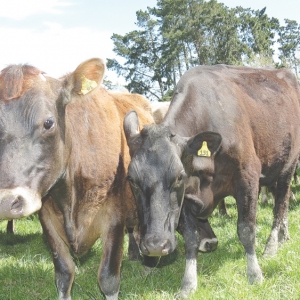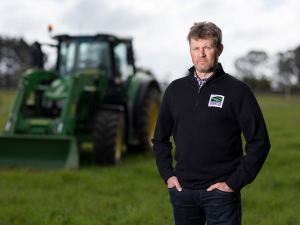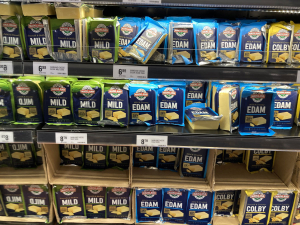As in all livestock farming, correct nutrition is essential for the animal to grow, reproduce and maintain health. Protein is a nitrogen-based nutrient required by animals for building muscle, organs, hooves, hair and connective tissue, immune function and milk protein from lactating females. However, up to 60% of consumed protein in cows can be lost in urine due to unbalanced feeding and poor rumen efficiency.
To nutritionists, protein is an expensive commodity, whether it is bought in as a feedstuff or from pasture, which has fertiliser and labour costs associated with good production.
In New Zealand, cows are mainly fed rye-clover pastures, which are high in sugar and protein and poor in fibre, relative to other grassland species. This can adversely affect the function of the rumen and protein availability. Rumen micro-organisms are primarily present to convert the fibrous materials into energy-rich volatile fatty acids (VFAs), which provide some 70% of the cow’s energy. They need a stable, near neutral pH to do this efficiently. Rumen microbial activity allows the cow to live on fibre-rich feedstuffs, as the host animal lacks the enzymes needed to do this.
Sugars from lush, low fibre pasture are rapidly broken down in the rumen and can result in low pH conditions from the acids produced by the active bacteria. Such rumen conditions are manifested as acidosis and diarrhoea as well as the inhibition of the fibre-loving fermentation micro-organisms, which limits VFA production.
This situation has an impact on the digestion of protein, as these unsuitable conditions result in ammonia production from protein material, which is then taken up into the blood and excreted, meaning that useful nitrogenous compounds are not available for the animal to use. This can impact milk nitrogen levels as well as reducing basic components needed to sustain the cow’s body and for reproduction.
Research has shown that levels of excreted nitrogen, especially from urine, can be predicted from protein intake. As protein intake increases, so does urinary nitrogen output, especially once the intake level exceeds 400g of nitrogen/cow/day, or 15% protein in the feed.
As many New Zealand pastures can reach 26% protein (depending on the season and weather), this is the basis of many of the problems of nitrogen pollution from cow urine. Taking the example of a rye-clover based dairy system, a 450kg cow with 11 kg dry matter intake will consume 458g of protein per day from pasture. This gives a predicted 173g of nitrogen being excreted in urine every day. However, if the same cow is supplemented with 1.6kg/day of lower-protein palm kernel meal or maize silage, the dilution of the total protein intake and increase in fibre reduces the urine nitrogen to 143g (17% less). If 3.2kg of palm kernel meal or maize silage is fed, this drops further to 118g nitrogen – a saving of 32% in excretion.
Multiply these numbers by your herd size, and the environmental savings soon stack up.
Although these are simple examples, and do not offer fully balanced diets, the point is that nitrogen output can be reduced, and the increase in fibre in the rumen will help make more nitrogenous compounds available to the cow, rather than being lost immediately as urine. In addition, such changes can stabilise rumen function by the introduction of fibre, and hence improve energy production.
Essentially, optimising feeding of dairy cows can not only limit nitrogen pollution, but can also increase the cow’s productivity.
• Dr Lucy Waldron runs independent nutrition consultancy and research business, LWT Animal Nutrition, Feilding, which caters for all species domestically and internationally. Prior to 2005 she worked for various specialist feed companies worldwide
















